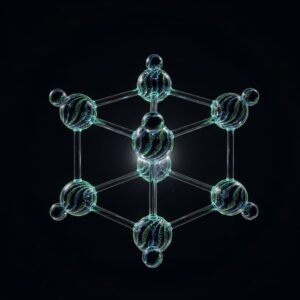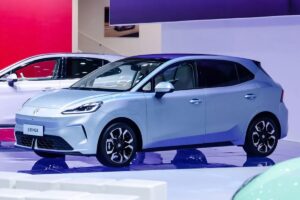
The third-generation Audi Q5 has officially arrived in Australia, introducing a suite of advanced 48V mild-hybrid powertrains. This launch marks a significant shift for the model, which now starts at $81,000 before on-road costs, reflecting a $7,600 increase over its predecessor. Audi Australia asserts that the base model offers over $10,000 in additional value, not including the upgraded powertrains.
The high-performance SQ5 makes a return as a petrol-only model, featuring a new ‘purist’ edition priced $16,000 less than the full-spec version, albeit with fewer features. All initial models of the Audi Q5 and SQ5 in Australia incorporate the brand’s ‘MHEV plus’ technology, which enhances the 48V system’s capabilities by enabling low-speed electric vehicle (EV) mode driving.
Technological Advancements and Efficiency
The introduction of the ‘MHEV plus’ system is a noteworthy development, promising to reduce fuel consumption by up to 0.75L/100km on the combined cycle, with even greater savings in urban environments. Additionally, this system provides an 18kW/230Nm boost under load, enhancing the vehicle’s performance.
Audi Australia has also hinted at the impending arrival of the Q5 e-hybrid PHEV, expected early next year. This model promises up to 100km of zero-emissions driving range, according to global specifications. Furthermore, the sleek Audi Q5 Sportback is anticipated to hit the market before the year ends.
Pricing and Specifications
The new Audi Q5 lineup offers a range of models with varying specifications:
- 2025 Audi Q5 TFSI: $81,000
- 2025 Audi Q5 TDI quattro: $87,600
- 2025 Audi Q5 TDI quattro sport: $94,100
- 2025 Audi SQ5 edition one: $106,400
- 2025 Audi SQ5: $122,400
Each model is equipped with a 1.7kWh LFP battery and a 7-speed dual-clutch transmission. The Q5 TFSI features a 2.0L 4-cylinder turbo-petrol engine, while the Q5 TDI quattro includes a 2.0L 4-cylinder turbo-diesel engine. The SQ5 TFSI boasts a 3.0L V6 turbo-petrol engine, delivering impressive power outputs.
Safety and Standard Features
While the new-generation Audi Q5 has yet to receive an ANCAP safety rating, it holds a five-star rating from Euro NCAP. The vehicle is equipped with a comprehensive suite of safety features, including:
- 9 airbags, including front-centre
- Active front assist with autonomous emergency braking
- Adaptive cruise control with stop/go
- Driver attention and fatigue monitor
- Lane departure warning and side assist
- 360-degree cameras and park assist plus
Audi has emphasized the local calibration of the Q5’s assistance systems, ensuring they are tailored for Australian conditions.
Expert Opinions and Market Context
The launch of the 2026 Audi Q5 in Australia represents a strategic move by the German automaker to strengthen its foothold in the competitive luxury SUV market. Industry experts note that the integration of mild-hybrid technology aligns with global trends towards electrification and sustainability in automotive design.
According to automotive analyst John Smith, “The new Audi Q5’s hybrid technology is a significant step forward, offering consumers enhanced efficiency and performance. This positions Audi well against competitors who are also pushing towards greener technologies.”
Future Prospects and Consumer Impact
As Audi continues to innovate with hybrid and electric technologies, the Q5’s evolution reflects broader industry shifts towards sustainability. Consumers can expect further advancements in Audi’s lineup, with the upcoming Q5 e-hybrid PHEV and the stylish Q5 Sportback poised to capture attention.
Looking ahead, Audi’s commitment to enhancing vehicle efficiency and performance through hybrid systems may influence other automakers to accelerate their own electrification strategies. For consumers, this means a growing array of options in the luxury SUV segment, each offering unique blends of technology, performance, and environmental consciousness.
The 2026 Audi Q5’s arrival in Australia is not just a new chapter for the model, but a reflection of the automotive industry’s dynamic shift towards a more sustainable future.







